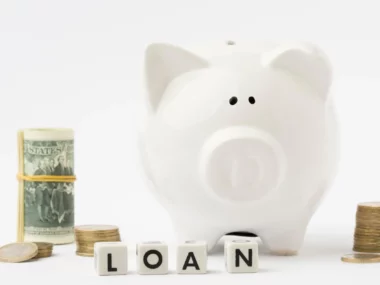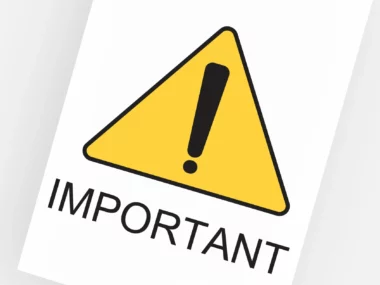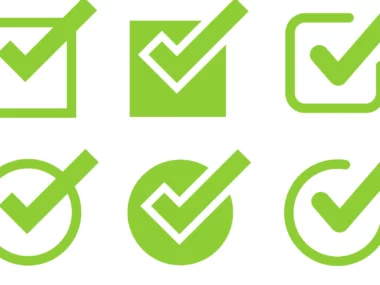If you need some extra money to pay for a big purchase, cover an emergency, or consolidate your debts, you may be wondering how to get a loan in the US. A loan is a type of financing that allows you to borrow money from a lender and repay it over time with interest. There are different types of loans available in the US, such as personal loans, auto loans, student loans, mortgage loans, and business loans. Each type of loan has its own purpose, requirements, and terms. In this blog post, we will give you a brief overview of how to get a loan in the US and answer some common questions you may have.
How to Get a Loan
The process of getting a loan in the US may vary depending on the type of loan you want and the lender you choose. However, there are some general steps that you can follow to increase your chances of getting approved and getting the best deal. Here are the steps:
- Step 1: Decide what type of loan you need and how much you want to borrow. You should have a clear idea of why you need a loan and how much you can afford to repay. You should also consider the interest rate, fees, repayment term, and monthly payment of the loan. You can use online calculators or tools to help you estimate these factors.
- Step 2: Check your credit score and report. Your credit score and report are important factors that lenders use to evaluate your creditworthiness and risk level. They also affect the interest rate and terms that lenders offer you. Generally, the higher your credit score, the better your chances of getting approved and getting lower rates. You can check your credit score for free from several sources, such as NerdWallet or Credit Karma. You can also get your credit report for free once a year from each of the three major credit bureaus: Equifax, Experian, and TransUnion. You should review your credit report for any errors or negative items that may hurt your score and dispute them if necessary.
- Step 3: Compare lenders and offers. There are many lenders that offer loans in the US, such as banks, credit unions, online platforms, fintech companies, or peer-to-peer lenders. Each lender has its own criteria, rates, and terms for different types of loans. You should shop around and compare lenders and offers to find the best option for your needs. You can use online tools or websites to help you compare lenders and offers based on your credit score, income, loan amount, and loan purpose.
- Step 4: Apply for the loan. Once you have chosen a lender and an offer that suits your needs, you can apply for the loan either online or in person. You will need to fill out an application form with information about yourself and your finances, such as your name, address, phone number, email address, social security number, date of birth, income, expenses, assets, debts, etc. You will also need to provide some documents that support your application, such as:
- Your identification (such as driver’s license, passport, etc.)
- Your proof of income (such as pay stubs, tax returns, etc.)
- Your proof of address (such as utility bills, lease agreement, etc.)
- Your bank statements
- Your loan purpose (such as invoice, contract, etc.)
After submitting your application, you will need to wait for the lender’s decision, which may take from a few minutes to a few days, depending on the lender and the type of loan.
If your application is approved, you will receive a loan agreement from the lender, which will include details such as:
- The loan amount
- The interest rate
- The fees
- The repayment term
- The monthly payment
- The late payment penalties
- The prepayment penalties
You should read the loan agreement carefully and make sure you understand all the terms and conditions before signing it.
If your application is denied, you will receive a notice from the lender, which will include reasons for the denial, such as:
- Low credit score
- High debt-to-income ratio
- Insufficient income
- Lack of collateral
You should read the notice carefully and see if there is anything you can do to improve your chances of getting approved in the future, such as:
- Improving your credit score
- Reducing your debt-to-income ratio
- Increasing your income
- Providing collateral
How Can I Get a Loan With Bad Credit?
If you have bad credit, which is usually defined as having a credit score below 630, you may find it harder to get a loan in the US.
However, it is not impossible. There are some lenders that specialize in offering loans to people with bad credit, such as:
- Online lenders: These are non-bank lenders that operate online and offer fast and convenient access to various types of loans with flexible requirements and terms. However, online lenders also tend to charge higher interest rates and fees than banks and may not offer as much customer service or support.
- Credit unions: These are non-profit financial institutions that offer various types of loans with lower rates and fees than banks. However, credit unions also have membership requirements that may limit your access to their services.
- Peer-to-peer lenders: These are online platforms that connect borrowers with individual investors who are willing to lend money. However,
- peer-to-peer lenders also have high interest rates and fees and may not be regulated by the same laws as banks.
- Payday lenders: These are lenders that offer short-term loans with very high interest rates and fees that are usually due on your next payday. However, payday lenders also have predatory practices that can trap you in a cycle of debt.
If you have bad credit, you should be careful when choosing a lender and a loan. You should avoid lenders that charge exorbitant rates and fees or that ask for upfront payments or personal information. You should also avoid borrowing more than you need or more than you can afford to repay.
You should also try to improve your credit score by paying your bills on time, reducing your debt-to-income ratio, disputing any errors on your credit report, and using credit cards responsibly.
Is Sallie Mae a Federal Loan?
Sallie Mae is one of the largest providers of student loans in the US. However, Sallie Mae is not a federal loan. Sallie Mae is a private lender that offers private student loans.
Private student loans are loans that are offered by private lenders such as banks, credit unions, or online platforms.
Private student loans have different terms and conditions than federal student loans, which are loans that are offered by the federal government through programs such as Direct Loans or Perkins Loans.
Some differences between private student loans and federal student loans include:
- Interest rates: Private student loans usually have variable interest rates that depend on your credit score and market conditions. Federal student loans usually have fixed interest rates that are set by Congress.
- Fees: Private student loans may have origination fees or other fees that increase the cost of borrowing. Federal student loans do not have origination fees for most types of loans.
- Repayment options: Private student loans usually have fewer repayment options than federal student loans. Federal student loans offer various repayment plans based on your income level or career choice.
- Forgiveness options: Private student loans usually do not offer forgiveness options unless you die or become permanently disabled. Federal student loans offer forgiveness options for certain situations such as working in public service or teaching in low-income schools.
- Deferment options: Private student loans usually have limited deferment options that allow you to temporarily stop making payments due to economic hardship or other reasons. Federal student loans offer deferment options for various reasons such as unemployment or enrollment in school.
If you need a student loan to pay for college or graduate school, you should first exhaust all your federal student loan options before considering private student loans. Federal student loans usually offer more benefits and protections than private student loans.
However, if you still need additional funding after using up your federal student loan options, you may consider private student loans from reputable lenders such as Sallie Mae. You should compare different private student loan offers based on factors such as interest rate, fees, repayment term, monthly payment, customer service, etc.
You should also read the fine print carefully and make sure you understand all the terms and conditions before signing any agreement.
Getting a loan in the US can be a useful way to finance your personal or business needs. However, it can also be a complex process that requires careful planning and preparation.
By following these steps, you can increase your chances of getting approved for a loan that suits your needs.






